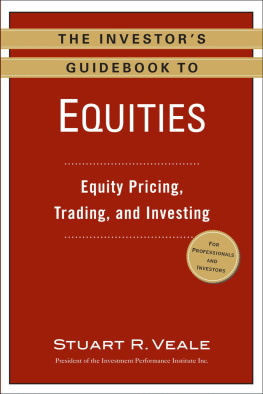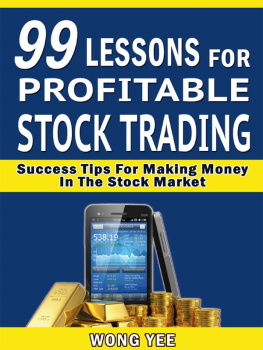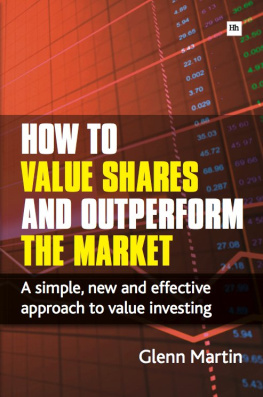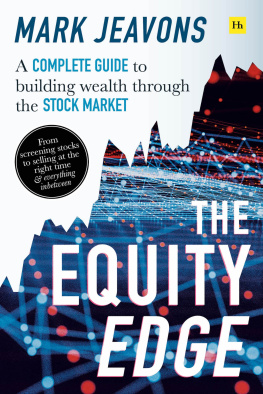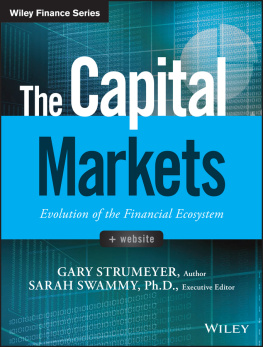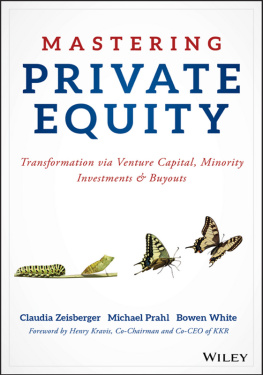
Copyright 2014 by Nicholas Atkeson and Andrew Houghton. All rights reserved. Except as permitted under the United States Copyright Act of 1976, no part of this publication may be reproduced or distributed in any form or by any means, or stored in a data base or retrieval system, without the prior written permission of the publisher.
ISBN: 978-0-07-181291-7
MHID: 0-07-181291-1
The material in this eBook also appears in the print version of this title: ISBN: 978-0-07-181290-0, MHID: 0-07-181290-3.
E-book conversion by codeMantra
Version 2.0
All trademarks are trademarks of their respective owners. Rather than put a trademark symbol after every occurrence of a trademarked name, we use names in an editorial fashion only, and to the benefit of the trademark owner, with no intention of infringement of the trademark. Where such designations appear in this book, they have been printed with initial caps.
McGraw-Hill Education books are available at special quantity discounts to use as premiums and sales promotions or for use in corporate training programs. To contact a representative, please visit the Contact Us page at www.mhprofessional.com.
This publication is designed to provide accurate and authoritative information in regard to the subject matter covered. It is sold with the understanding that neither the author nor the publisher is engaged in rendering legal, accounting, securities trading, or other professional services. If legal advice or other expert assistance is required, the services of a competent professional person should be sought.
From a Declaration of Principles Jointly Adopted by a Committee of the American Bar Association and a Committee of Publishers and Associations
TERMS OF USE
This is a copyrighted work and McGraw-Hill Education and its licensors reserve all rights in and to the work. Use of this work is subject to these terms. Except as permitted under the Copyright Act of 1976 and the right to store and retrieve one copy of the work, you may not decompile, disassemble, reverse engineer, reproduce, modify, create derivative works based upon, transmit, distribute, disseminate, sell, publish or sublicense the work or any part of it without McGraw-Hill Educations prior consent. You may use the work for your own noncommercial and personal use; any other use of the work is strictly prohibited. Your right to use the work may be terminated if you fail to comply with these terms.
THE WORK IS PROVIDED AS IS. McGRAW-HILL EDUCATION AND ITS LICENSORS MAKE NO GUARANTEES OR WARRANTIES AS TO THE ACCURACY, ADEQUACY OR COMPLETENESS OF OR RESULTS TO BE OBTAINED FROM USING THE WORK, INCLUDING ANY INFORMATION THAT CAN BE ACCESSED THROUGH THE WORK VIA HYPERLINK OR OTHERWISE, AND EXPRESSLY DISCLAIM ANY WARRANTY, EXPRESS OR IMPLIED, INCLUDING BUT NOT LIMITED TO IMPLIED WARRANTIES OF MERCHANTABILITY OR FITNESS FOR A PARTICULAR PURPOSE. McGraw-Hill Education and its licensors do not warrant or guarantee that the functions contained in the work will meet your requirements or that its operation will be uninterrupted or error free. Neither McGraw-Hill Education nor its licensors shall be liable to you or anyone else for any inaccuracy, error or omission, regardless of cause, in the work or for any damages resulting therefrom. McGraw-Hill Education has no responsibility for the content of any information accessed through the work. Under no circumstances shall McGraw-Hill Education and/or its licensors be liable for any indirect, incidental, special, punitive, consequential or similar damages that result from the use of or inability to use the work, even if any of them has been advised of the possibility of such damages. This limitation of liability shall apply to any claim or cause whatsoever whether such claim or cause arises in contract, tort or otherwise.
To Shawn for his incredible generosity and
support over the years
and
To C.J. for hiring us as stock jocks
Contents
CHAPTER ONE
The Story of Sonny
CHAPTER TWO
The Nature of Streaks
CHAPTER THREE
Why Should We Invest?
CHAPTER FOUR
The Story of Mr. M
CHAPTER FIVE
Building Blocks
CHAPTER SIX
The Story of Modern Finance Theory
CHAPTER SEVEN
The Story of Mike
CHAPTER EIGHT
Style
CHAPTER NINE
Your Brain on Stocks
CHAPTER TEN
Observations from the Trading Floor of an Investment Bank
CHAPTER ELEVEN
Risk
CHAPTER TWELVE
A History of Mutual Funds and the Story of Jeffrey Vinik
CHAPTER THIRTEEN
Paradigm Shift
CHAPTER FOURTEEN
The Story of Neil Peplinski and Good Harbor
CHAPTER FIFTEEN
What Is Tactical Investing?
CHAPTER SIXTEEN
The Story of Vinay Munikoti
CHAPTER SEVENTEEN
Capturing the Ups and Missing the Downs: Five Steps
CHAPTER EIGHTEEN
Do Enough to Make a Difference
CHAPTER NINETEEN
Knowing If It Works: Attribution Analysis
CHAPTER TWENTY
Seeing the Forest for the Fees
CHAPTER TWENTY-ONE
Parting Shot
Foreword
AS COFOUNDER and chairman emeritus of the MoneyShow, the largest self-directed investor conference series in the world, I have spent the past 35 years helping individual investors find winning investment strategies. During these four decades, I have often been frustrated that the retail investment industry for the most part has provided cookie-cutter-type advice involving allocating your hard-won savings into standardized mass-market investment products that are ill suited to handle rapidly changing market conditions.
Unfortunately, many of you have been poorly served by your financial advisors. There is an awakening going on caused by the lack of stock market appreciation over the last 12 years and the shock of a more than 50 percent stock market crash in 20072009. Your retirement savings, your childrens education funds, and your overall wealth have not advanced in more than a decade. Something is wrong. What financial advisors have been preaching is not working.
It turns out that what seems wrong is actually quite normal when you look at long-term stock market supercycles. Over the last 112 years of the Dow Jones Industrial Average, there have been four periods of 17 to 25 years in which the market has shown no meaningful appreciation and experienced high volatility.
When I first met Nick and Andrew, they were speakers on a panel discussion, talking about asset allocation in the new investment environment at the World MoneyShow in Orlando. I have moderated hundreds of these panel discussions, and virtually all the advice provided to investors comes down to grin and bear it during the hard times in the stock market. When I heard stock managers Nick and Andrew say without hesitation that there are times when you should not own any stocks, I nearly fell out of my chair. Finally, someone was stating the obvious. Here were advisors focused not just on fee collection but on absolute returns. I could not wait to hear what they had to say next.
What Nick and Andrew show you in this book is how to take a completely different approach to investing. They show you how to look at the investment world from the standpoint of how much money might I lose? rather than how much money might I make? By protecting your capital first, you will learn how to make a fortune. Chasing return often leads to the poorhouse, whereas protecting capital is Warren Buffetts first and second rule of investing.
Next page

